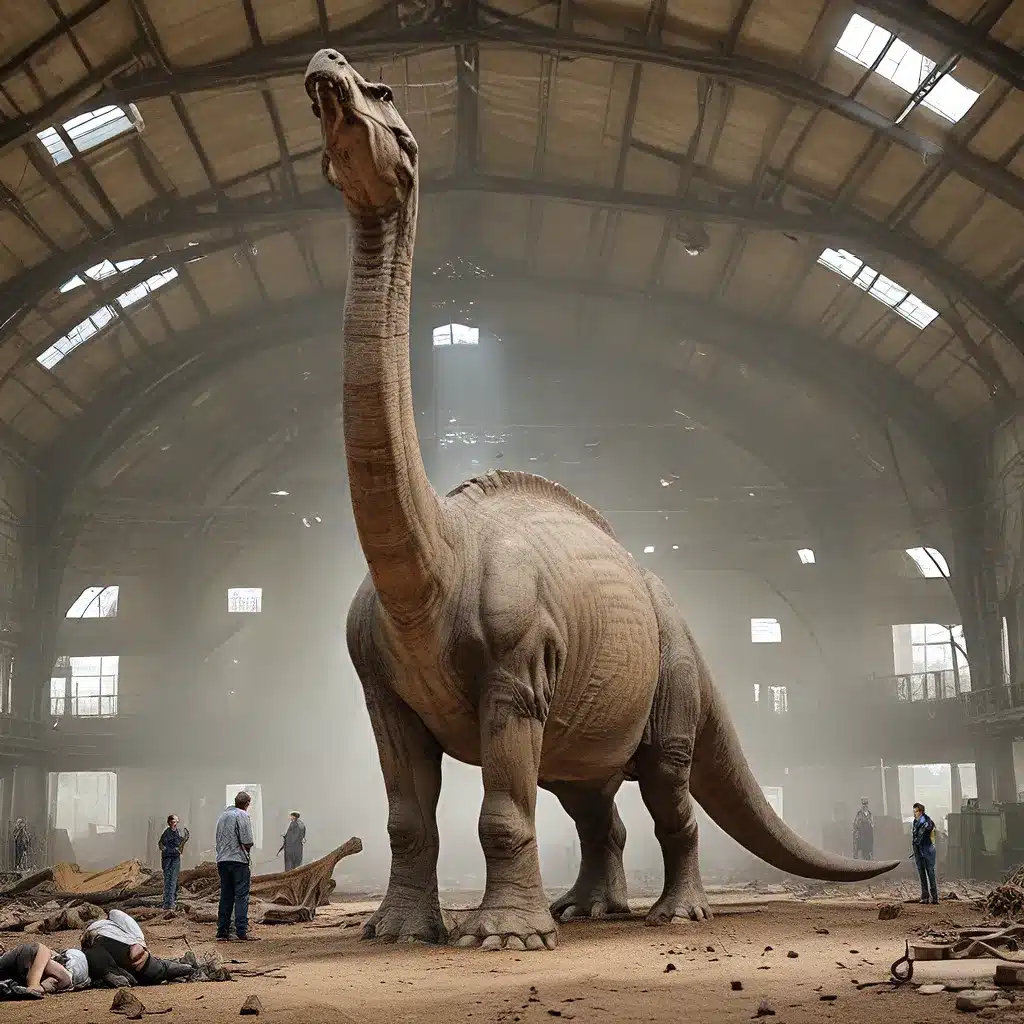
Exploring the Colossal Sauropod and Its Terrestrial Dominance
The realm of dinosaur paleontology is a treasure trove of captivating discoveries, each unearthing new insights into the ancient past. Among the most enigmatic and awe-inspiring of these prehistoric giants is the Argentinosaurus, a colossal sauropod that once roamed the lush landscapes of what is now Argentina.
The Rise of the Terrestrial Sauropod
For decades, the prevailing perception of sauropods, the long-necked and long-tailed dinosaurs, was that they were primarily aquatic creatures, dwelling in swamps and lakes to support their immense bulk. However, this notion underwent a significant shift in the 1960s, as a Dinosaur Renaissance ushered in a renewed scientific interest and a fresh understanding of these behemoths.
Paleontologists recognized that sauropods were, in fact, wholly terrestrial creatures, devoid of any adaptations for an aquatic lifestyle. The evidence suggested that these giants were well-suited to carrying their massive frames on land, with strong, straight limbs and hips designed to support their weight.
This paradigm shift challenged the long-held beliefs about sauropods, including the notion that they were “swamp monsters” that spent most of their time wallowing in watery refuges. Instead, the new understanding portrayed sauropods as majestic, land-dwelling titans that dominated the Mesozoic landscape.
The Argentinosaurus: A Colossal Presence
Amidst this evolving understanding of sauropod biology and behavior, the discovery of the Argentinosaurus in the early 1990s added a new chapter to the story of these ancient giants. Unearthed in the Patagonian region of Argentina, the Argentinosaurus was a true behemoth, estimated to have reached lengths of up to 40 meters (130 feet) and weighed as much as 100 metric tons (110 short tons).
This staggering size made the Argentinosaurus one of the largest land animals to have ever existed, dwarfing even the iconic Tyrannosaurus rex, which was a mere fraction of its size. The sheer scale of the Argentinosaurus is difficult to comprehend, as it would have been capable of easily crushing a full-grown African elephant with a mere step.
Adaptations for a Terrestrial Existence
The Argentinosaurus, like other sauropods, was a herbivore, relying on its massive size and long neck to reach the lush foliage that sustained its colossal frame. Unlike earlier paleontological theories that portrayed sauropods as swamp-dwelling creatures, the Argentinosaurus and its kin were well-suited to a terrestrial existence, with features that allowed them to thrive on land.
The dinosaur’s robust limbs and sturdy skeletal structure were designed to support its immense weight, enabling it to roam vast distances in search of food. Its long neck, which could reach up to 15 meters (50 feet) in length, allowed the Argentinosaurus to access the uppermost branches of towering trees, ensuring a steady supply of nourishment.
Moreover, the Argentinosaurus lacked any adaptations associated with an aquatic lifestyle, such as webbed feet or a powerful tail for swimming. This evidence reinforces the notion that these colossal creatures were firmly rooted in the terrestrial realm, challenging the long-held beliefs about sauropods and their habitat preferences.
Theories and Insights
The discovery of the Argentinosaurus and the ongoing study of its remains have led to a wealth of new theories and insights about the ancient world. Paleontologists have been able to piece together a more accurate understanding of sauropod biology and ecology, shedding light on the adaptations and behaviors that allowed these giants to thrive on land.
One particular area of interest is the Argentinosaurus’ feeding strategies and the impact it had on the Mesozoic ecosystem. With its towering height and lengthy neck, the Argentinosaurus was likely able to access a vast array of plant life, from the lowermost ferns to the uppermost branches of towering conifers. This ability to exploit a diverse range of food sources may have contributed to the sauropod’s remarkable success and dominance during the Cretaceous period.
Furthermore, the discovery of the Argentinosaurus has prompted deeper investigations into the evolutionary history and relationships of sauropods. By studying the anatomical features and geological context of this colossal creature, researchers have gained valuable insights into the broader patterns of sauropod diversification and the environmental factors that shaped their evolution.
The Enduring Legacy of the Argentinosaurus
The Argentinosaurus stands as a testament to the incredible diversity and resilience of life during the Mesozoic Era. Its sheer size and the challenges it faced in maintaining its massive frame on land have captivated the imagination of both scientists and the general public alike.
The study of the Argentinosaurus and other sauropods continues to yield new discoveries and insights, enriching our understanding of the ancient world and the remarkable creatures that once roamed it. As paleontologists delve deeper into the Argentinosaurus’ story, the mysteries of this colossal dinosaur and its kind continue to unfold, offering a glimpse into a bygone era of unparalleled natural wonders.


